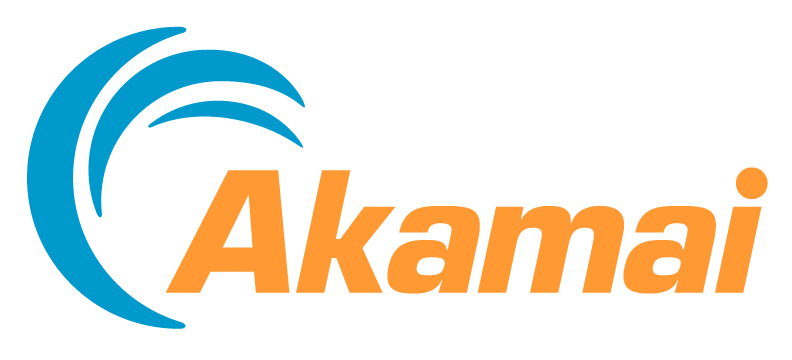
 Akamai Technologies, the global leader in content delivery network (CDN) services, has released its Fourth Quarter, 2014 State of the Internet Report. Based on data gathered from the Akamai Intelligent Platform™, the report provides insight into key global statistics such as connection speeds and broadband adoption across fixed and mobile networks, overall attack traffic, global 4K readiness, and IPv4 exhaustion and IPv6 implementation.
Akamai Technologies, the global leader in content delivery network (CDN) services, has released its Fourth Quarter, 2014 State of the Internet Report. Based on data gathered from the Akamai Intelligent Platform™, the report provides insight into key global statistics such as connection speeds and broadband adoption across fixed and mobile networks, overall attack traffic, global 4K readiness, and IPv4 exhaustion and IPv6 implementation.
The report also includes insights into several high-profile security vulnerabilities, including Poodle, UPnP attacks, DNS flooders and Yummba Webinject.
Data and graphics from the Fourth Quarter, 2014 State of the Internet Report can be found on the Akamai State of the Internet site and through the Akamai State of the Internet app for iOS and Android devices. State of the Internet Report discussions are also taking place on the Akamai Community.
“Over the course of 2014, we’ve seen healthy global growth across all of our key metrics for Internet connectivity, broadband adoption and 4K readiness,” said David Belson, editor of the report. “The positive trends make an interesting contrast to a recent study that found 4.4 billion people around the world do not go online, indicating a strong need for continued efforts to improve and deploy Internet infrastructure globally.”
Highlights from Akamai’s Fourth Quarter, 2014 State of the Internet Report:
Global Average Connection Speeds and Global Broadband Connectivity
For the third consecutive quarter, the global average connection speed remained above the 4 Mbps “broadband” threshold, increasing a nominal 0.7% to 4.5 Mbps.
Quarterly global average connection speed changes were mixed across the top 10 countries/regions, with six seeing increases, three seeing decreases and Switzerland (14.5 Mbps) remaining unchanged. Among the regions/countries where average connection speeds grew quarter-over-quarter, the largest increase was seen in Sweden (14.6 Mbps), with a modest 3.5% gain. Globally, a total of 98 qualifying countries/regions saw average connection speeds increase in the fourth quarter, with growth rates ranging from 78% in Nepal (2.5 Mbps) down to a meager 0.1% in the Czech Republic (12.3 Mbps). The average connection speed increased 20% globally year-over-year with increases seen in 132 qualifying countries, with growth rates ranging from 0.3% in Morocco (2.4 Mbps) to 146% in Congo (1.3 Mbps).
Similar to the average connection speed, the global average peak connection speed increased slightly in the fourth quarter by 8.4% to 26.9 Mbps. Hong Kong again had the highest average peak connection speed at 87.7 Mbps, but all of the top 10 saw average peak speeds greater than 60 Mbps. On a global basis, 114 out of 142 qualifying countries/regions experienced average peak connection speed increases from the third quarter, with growth ranging from 0.1% in Slovenia (39.3 Mbps) to 90% in Congo (10 Mbps). One hundred six qualifying countries/regions’ average peak connection speeds increased from the fourth quarter of 2013.
Global high broadband (>10 Mbps) adoption rates increased 2.9% in the fourth quarter, after a slight decline in the third quarter. South Korea’s 79% high broadband adoption rate remained far ahead of second-place Hong Kong with a 60% adoption rate. Among the 65 qualifying countries/regions that qualify for this metric, 42 saw quarter-over-quarter increases, ranging from Norway’s 1% bump to 35% high broadband adoption up to Qatar’s significant 282% jump to 20% adoption. Only China saw a year-over-year decline in high broadband adoption, dropping a surprising 37% to a 1.1% adoption rate. Across the 63 qualifying geographies, yearly increases ranged from 8% in Austria (26.4% adoption) to a massive 2,000% in Qatar (20% adoption).
The global broadband (>4 Mbps) adoption rate decreased slightly in the fourth quarter, losing 0.7% to 59% adoption. One hundred four countries/regions qualified for inclusion for this metric, 76 of which saw quarterly growth in broadband adoption rates. Bulgaria had the highest level of broadband adoption in the fourth quarter at 96%, just edging out last quarter’s leader South Korea, which experienced a 0.1% decline in its adoption rate. Quarter-over-quarter increases ranged from 0.2% in Switzerland (93% adoption) to 186% in Nepal (17% adoption). The global broadband adoption rate increased 7.8% from the fourth quarter of 2013, slower than the 12% seen in the previous quarter, continuing the downward trend of yearly growth rates that has been observed over the last several quarters.
4K Readiness
Following the introduction of “4K Readiness” in the First Quarter, 2014 State of the Internet Report, Akamai continues to identify candidate geographies that are most likely to sustain connection speeds above 15 Mbps, as Ultra HD adaptive bitrate streams typically require bandwidth between 10 and 20 Mbps. The findings do not account for other “readiness” factors, including availability of 4K-encoded content or 4K-capable televisions and media players.
In total, 55 countries/regions qualified for inclusion this quarter, and 12% of the global connections were at or above the 15 Mbps threshold. While quarter-over-quarter readiness increased by only 0.6%, it grew year-over-year by 37%. South Korea remained the country at the highest level of 4K readiness, with two-thirds of its connections to Akamai at or above 15 Mbps.
Attack Traffic and Security
Akamai maintains a distributed set of unadvertised agents deployed across the Internet to log connection attempts that the company classifies as attack traffic. Based on the data collected by these agents, Akamai is able to identify the top countries from which attack traffic originates, as well as the top ports targeted by these attacks. It is important to note, however, that the originating country as identified by the source IP address may not represent the nation in which an attacker resides.
In the fourth quarter of 2014, Akamai observed attack traffic originating from 199 unique countries/regions. As seen in previous reports, China once again remained well ahead of the other countries/regions (41%), originating more than three times the observed attack traffic from the U.S. (13%), which saw an approximate 20% quarter-over-quarter decline, back down to second quarter levels. China and the U.S. were again the only two countries to originate more than 10% of observed traffic during the fourth quarter – the remaining countries/regions were all below 5%. Germany (1.8%) and Hong Kong (1.3%) joined the top 10 this quarter, pushing out Indonesia and Venezuela, while India was the only remaining top 10 country to see observed traffic percentages decline, dropping slightly from 2.9% in the third quarter to 2.4%.
The overall concentration of observed attack traffic decreased once again, with the top 10 countries/regions originating 75% of observed attacks, down from 84% and 82% in the second and third quarters, respectively. The majority of attack traffic continued to originate from the Asia Pacific region (59%). Europe had the next highest concentration of observed attack traffic at 19%, up significantly from 11% the previous quarter, while the lowest volume (1%) originated from Africa.
In total, attack traffic targeting the top 10 ports comprised 79% of all observed attack traffic in the fourth quarter, a substantial increase from 38% in the previous quarter. Port 23 (Telnet) remained the most popular target in the fourth quarter, accounting for 32% of observed attacks, a significant increase to more than 2.5 times previous levels. In addition, all other ports in the top 10 increased their percentages as well, with significant increases for Ports 445 (Microsoft-DS), 8080 (HTTP Alternate), 3389 (Microsoft Terminal services) and 22 (SSH).
Reported Distributed Denial of Service (DDoS) Attack Traffic
In addition to observations on attack traffic, the State of the Internet Report includes insight into DDoS attacks based on reports from Akamai’s customers. Customers reported 327 attacks during the fourth quarter of 2014, an increase of more than 20% over the third quarter. The Commerce and Enterprise segments again accounted for the majority of attacks, while all industries except Enterprise saw increases in attacks from the third to fourth quarter.
During the fourth quarter Akamai saw increased attacks in all regions, with the Americas experiencing the majority of the growth, with 35% more reported attacks than the previous quarter (177). The Asia Pacific region saw a 17% quarterly increase in the number of attacks at 98, while Europe, the Middle East and Africa (EMEA) experienced marginally greater growth at 18% with 52 attacks.
IPv4 and IPv6
In the fourth quarter of 2014, nearly 803 million unique IPv4 addresses, from 239 unique countries/regions, connected to the Akamai Intelligent Platform. This is 1.5% more than in the third quarter of 2014, and 2.5% more than in the same quarter last year. The number of unique IPv4 addresses seen globally by Akamai grew by about 12 million quarter over quarter. Among the top 10 countries in the fourth quarter, the unique IP count in the U.S. was the only one to decline, showing a 3.4% loss compared to the previous quarter. The United Kingdom and South Korea showed the largest gains, at 8.1% and 6.6%, respectively. Seventy percent of countries/regions across the globe had higher unique IPv4 address counts year-over-year. In all, 27 countries saw yearly growth rates above 50%, while three countries saw IPv4 address counts decline more than 50%.
Norway saw an 88% quarter-over-quarter jump in IPv6 traffic, although Belgium remains in the lead with 32% of content requests made over IPv6, more than double that of second-place Germany. As seen in previous quarters, cable and wireless providers continued to drive the number of IPv6 requests made to Akamai, many of which are leading the way for IPv6 adoption in their respective countries. Verizon Wireless and Brutele saw more than half of their requests to Akamai made over IPv6, with Telenet close behind.
Mobile Connectivity
In the Fourth Quarter, 2014 State of the Internet Report, 50 countries/regions qualified for inclusion in the mobile section. The United Kingdom had the fastest average connection speed at 16.0 Mbps. The next closest country, Denmark, had just over half that speed, at 8.8 Mbps. New Caledonia had the lowest average mobile connection speed at 1.0 Mbps.
As seen in previous reports, average peak mobile connection speeds again spanned an extremely broad range in the fourth quarter, from 157.3 Mbps in Singapore down to 7.5 Mbps in Argentina. Japan (116.3 Mbps) and Australia (129.9 Mbps) were the only two countries in addition to Singapore to see average peak speeds above 100 Mbps, and only Turkey (69.1 Mbps) and the United Kingdom (61.8 Mbps) had speeds above 50 Mbps.
The report also examines the percentage of connections to Akamai from mobile network providers at “broadband” speeds (more than 4 Mbps). In the fourth quarter, Venezuela, Denmark, Saudi Arabia and Sweden led the pack, each with a tremendous 97% level of mobile broadband adoption. Bolivia and New Caledonia both had adoption rates below 1%.
About the Akamai State of the Internet Report
Each quarter, Akamai publishes a “State of the Internet” report. This report includes data gathered from across the Akamai Intelligent Platform about attack traffic, broadband adoption, mobile connectivity and other relevant topics concerning the Internet and its usage, as well as trends seen in this data over time.
For additional information on the metrics in the report and how they are analyzed, please visit http://akamai.me/sotimetrics.
To learn more and to access the archive of past reports, please visit
http://www.stateoftheinternet.com/soti-reports.
To download the figures from the Fourth Quarter, 2014 State of the Internet Report, please visit: http://wwwns.akamai.com/soti/soti_q414_figures.zip.
About Akamai
As the global leader in Content Delivery Network (CDN) services, Akamai makes the Internet fast, reliable and secure for its customers. The company’s advanced web performance, mobile performance, cloud security and media delivery solutions are revolutionizing how businesses optimize consumer, enterprise and entertainment experiences for any device, anywhere. To learn how Akamai solutions and its team of Internet experts are helping businesses move faster forward, please visit www.akamai.com or blogs.akamai.com, and follow @Akamai on Twitter




